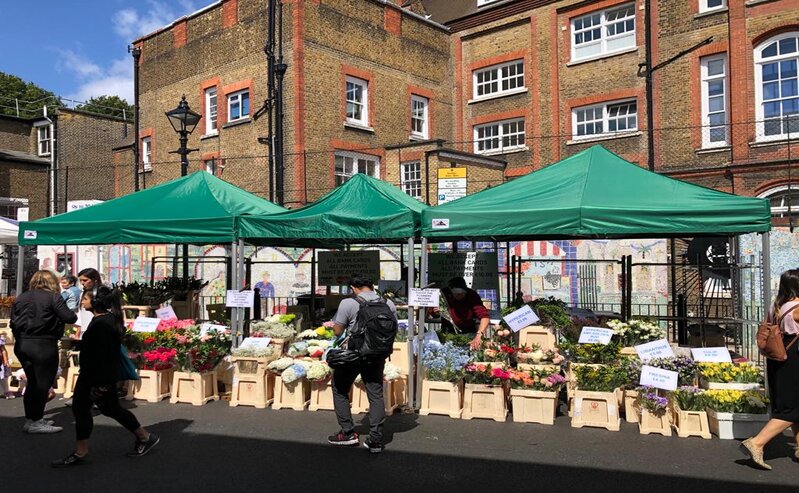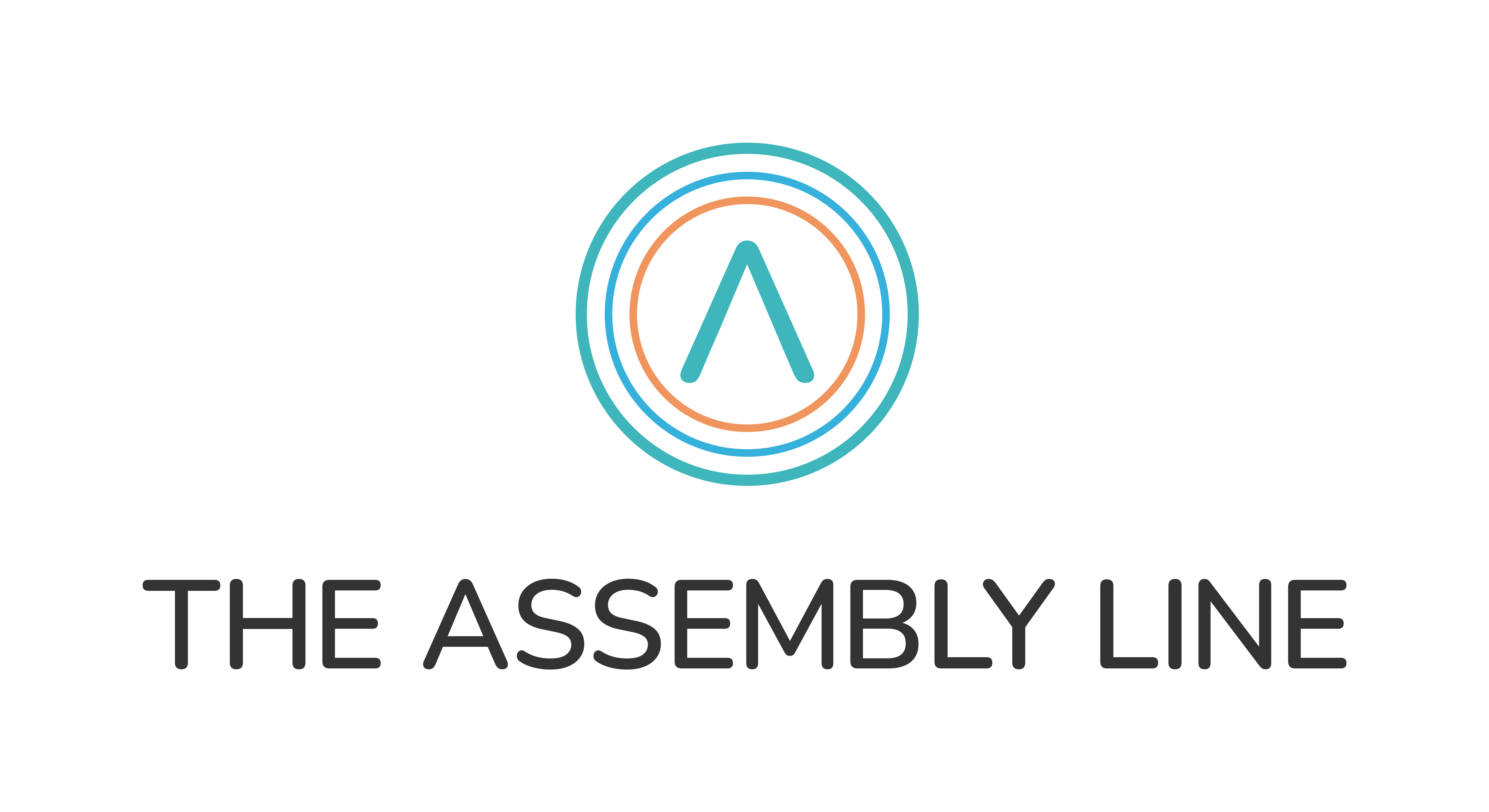
14 Sep Setting up stall again as markets return
As reopening continues at pace across high streets and town centres, we adapt to new ways of moving around and accessing shops and services, it’s easy to lose track of what opened when. Whilst it often appeared that reopening dates were set at short notice, (often announced on a Wednesday/ Thursday for reopening the following Monday), there were industry bodies working hard behind the scenes with their members to draw up guidelines so high streets and businesses could adapt and be ready for their reopening date.
A big component of many high streets and town centres is a market, be it a traditional indoor market hall, outdoor farmers market or the newer food hall that has opened up over the past few years, however, the sector has had a challenging time since many of them closed on 23 March 2020.
While markets were allowed to stay open for essential goods (mainly food), many took the decision to close due to low footfall, traders/family members who were shielding, difficulty with acquiring stock or reduced inspectors/council support staff available. Todmorden Market Hall (who signed up to ShopAppy.com), London’s Borough Market and Ridley Road in Hackney were just some of those that stayed open during the lockdown, however many remained closed and are only slowly coming back to life. We are only just beginning to see some food halls opening with KERB’s Seven Dials market reopening on 7 August and London’s largest food hall, Market Hall, West End staying closed for now. Broadway Market is the last of Hackney’s markets to reopen on Saturday 8 August.
Tower Hamlets in east London were one local authority that kept some of their markets open throughout lockdown and is now at a point where they have all reopened.
We caught up with Damian Patchell, Tower Hamlets’ Markets Manager to find out more about what happened behind the scenes and the effort involved in reopening 12 markets over three weeks.
East End tradition
Tower Hamlets is located on the fringes of the City of London and includes Brick Lane, traditional neighbourhoods such as Bow, Poplar and Stepney as well as Canary Wharf. The borough has approximately 2,500 pitches located in 12 markets and on street pitches.
The markets play a big part in the history of the east end and include Brick Lane, Petticoat Lane and Columbia Road Flower Markets amongst them. They are also located in the heart of neighbourhoods, serving diverse communities.
The build-up to lockdown
Tower Hamlets announced the suspension of market traders’ charges from 18 March, as circumstances leading to lockdown impacted footfall. They closed all their markets on 23 March following concerns around social distancing particularly at Columbia Road Market, where crowds were packing out the street more than usual. A limited number of food traders remained at six locations to support the community with access to low-cost food.
Columbia Road made national headlines on 22 March with many on social media declaring madness that it was open; however, checks had been made that morning and it was cleared to open in line with government guidelines. What couldn’t be controlled was customers’ behaviour with next to no adherence to social distancing. As a result, approval was sought from the mayor to close the market down.

From 600 traders to six
Whilst traders selling essential goods were permitted to remain open there was a need to ensure people local to the markets could continue to access good food, cheaply. Week one saw only 12 stalls trading across five markets. In weeks two and three of lockdown this reduced further to only six traders. Those markets that depended on office workers or that were not selling essential goods were closed altogether.
Traders who were keen to trade struggled to access stock at the usual price. For example, fish sellers were no longer visiting London with their catch, due to restaurants being closed. There were also health considerations with traders from an older age group and from a wide range of ethnicities placing them at a higher risk of contracting Coronavirus. Sadly, George Gladwell, the founder of Columbia Road Market Traders Association who had traded almost to the last day of trading died from Covid-19 in April having been ill for some time.
Traders struggled financially whether they were open or not and were supported by the council’s Discretionary Grant Scheme which in itself was not a large amount of money in relation to the number of the traders in the borough and there will likely be implications longer-term as to how long it will take the trade to return.
It was important to keep the markets open for local people for whom they provide affordable goods. The markets’ customer base is very much the people living around them for fruit and vegetables, however, the fish seller and others are reliant on regular customers travelling to shop with them.
As supply issues were resolved, more traders returned with up to 22 trading weekly, 12 of them at Whitechapel.
A phased reopening
Due to the number of pitches in the borough, the markets team developed a phased return to reopening those markets that had been closed and getting the non-essential good traders back. Over three weeks starting 15 June, markets reopened and traders returned. At Whitechapel Market, 30 traders joined each week to add them back in safely and with adequate distancing and new processes, with Columbia Road Flower Market being the last to reopen on Sunday 5 July.
A risk assessment was carried out for every market and in total 61 different daily plans and attendance sheets were created to manage this. Guidelines were developed for traders to return in a COVID secure way. However, not all traders have returned with a few self-isolating and/or cautious about their own health. Some traders found other employment during lockdown and may not return.
Many traders have moved to card payment and the council offered them support with this alongside hygiene and cleanliness advice. Traders have also been signing up to ShopAppy.com to enable them to trade online and offer a click and collect or delivery to customers. Only permanent traders (not casuals) are included in pitch plans for all markets since reopening and those with double pitches have been reduced to single to accommodate all permanent traders whilst allowing for social distancing.
Some traders were not adhering to new processes and social distancing, so the council took action by quickly closing them down again and inviting the traders to work with the markets team to develop a safe process for their own stall and to help them to enforce social distancing amongst customers. Those selling clothes are carrying unsold winter stock which they are now trying to sell in summer.
Columbia Road Flower Market presented the biggest change and the markets team worked closely with councillors, resident groups, local businesses and market traders to ensure the proposals would work for everyone.
This was far from simple! Involving five road closures, street marshals to manage queuing (with a maximum capacity of 750 people) an entry point, plus three exits. There is also a process for residents who need to access their homes on the street without joining the market queue. However, by reconfiguring the layout to run across three blocks the market is open at full capacity.
The market generates customers for the small, independent shops on the street and they are happy to see the market back. The new layout has taken some getting used to but it’s working well and is reviewed weekly.
What have you learnt?
We asked Damian what he and the team would do differently if they had to do this again.
- Not wait for central government directive on market closures. Damian suggests that the markets would have been closed down 5-7 days before the government mandatory closure. Being on the ground, there was an understanding that office workers were declining in numbers whilst social distancing guidance was unclear and therefore not being followed by the general public. The closure of markets had to be in the context of other council services and facilities such as schools to prevent an uncoordinated response.
- Be more agile. Set a challenge from the start as to how quickly and safely the council can get traders back and earning an income, something that is difficult to do in the context of local authority processes. The team has created leaner ways of working with a combination of technology and teamwork.
- Be more realistic on timescales. A phased reopening approach would have been over a longer time period than three weeks given the number of market plans needed.
- Work as a team. A small number of committed people made the whole process possible with cross departments working across the council to ensure reopening happened to plan.
- Share best practice and looks to others for advice. The council used the National Association of British Market Authorities’ (NABMA) guide to reopening to back up their plans internally and to ensure public health and safety was met.
Change will come
Markets are always changing in terms of what they sell and how they do it. As with the many discussions around high streets, retail and town centres, many traditional retail markets were struggling pre-COVID-19 and lockdown showed the challenges. Many aspects that have been discussed for years such as taking card payments are now in place and other changes are likely to be accelerated. They expect to see more innovation with new traders applying for a pitch or returning ones coming back with new ideas, having been unable to trader during this time.
With many of the borough’s markets located close to public transport, public confidence needs to return to London to using public transport again. Whilst people are increasingly home-based there is an opportunity for them to discover the markets in their neighbourhood, however, the markets as they are today may not meet the needs of these people but with regular customers in low numbers, traders will need to adapt if they are to increase their income.
The next six months will be focused on increasing footfall (safely) and ultimately traders’ incomes. With office workers being the main customer base around the city, the traders and markets team don’t yet know when they will be back or which group of people may replace them. There is a need more than ever to adapt and be flexible to be prepared for what 2021 may bring.

